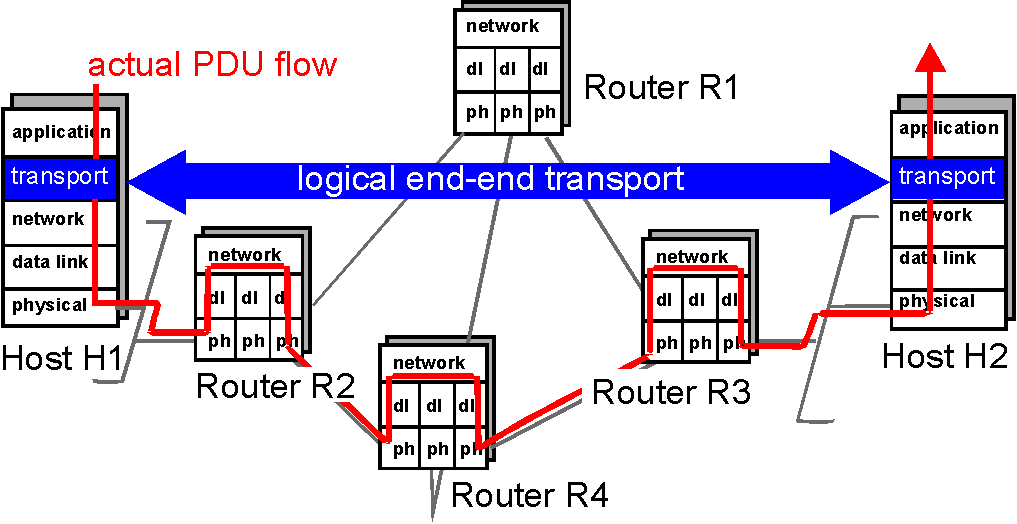In computer networking, a transport layer provides end-to-end or host-to-host communication services for applications within a layered architecture of network components and protocols. The transport layer provides services such as connection-oriented data stream support, reliability, flow control, and multiplexing.
Transport layer implementations are contained in both the TCP/IP model (RFC 1122), which is the foundation of the Internet, and the Open Systems Interconnection (OSI) model of general networking, however, the definitions of details of the transport layer are different in these models. In the Open Systems Interconnection model the transport layer is most often referred to as Layer 4 or L4.
The best-known transport protocol is the Transmission Control Protocol (TCP). It lent its name to the title of the entire Internet Protocol Suite, TCP/IP. It is used for connection-oriented transmissions, whereas the connectionless User Datagram Protocol (UDP) is used for simpler messaging transmissions. TCP is the more complex protocol, due to its stateful design incorporating reliable transmission and data stream services. Other prominent protocols in this group are the Datagram Congestion Control Protocol (DCCP) and the Stream Control Transmission Protocol (SCTP).

